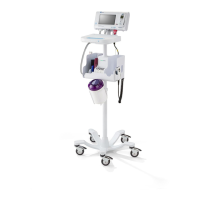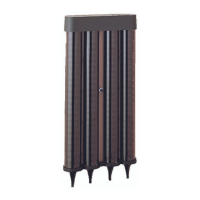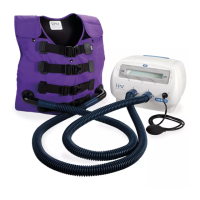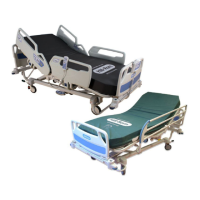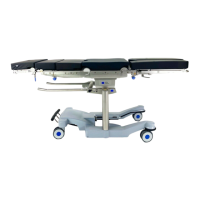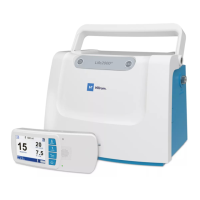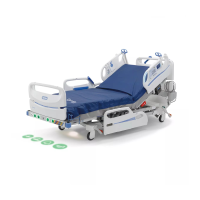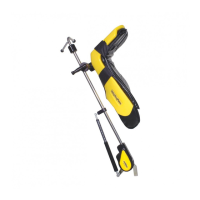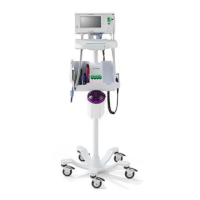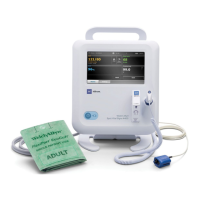
Do you have a question about the Hillrom Welch Allyn Spot Vital Signs 4400 and is the answer not in the manual?
| Device Type | Vital Signs Monitor |
|---|---|
| Brand | Hillrom Welch Allyn |
| Model | Spot Vital Signs 4400 |
| Measurements | Blood Pressure, SpO2, Temperature, Pulse Rate |
| Blood Pressure Technology | Oscillometric |
| Pulse Rate Range | 30-250 bpm |
| MAP Accuracy | ±5 mmHg |
| Battery Type | Lithium-ion |
| Battery Life | Up to 8 hours |
| Display | Color LCD |
| Connectivity | USB, Bluetooth |
| Power Source | Rechargeable Battery |
| SpO2 Technology | Masimo or Nellcor |
| Temperature Technology | SureTemp Plus |
| Memory | Stores up to 50 measurements |
Describes modifications to the FDA cleared intended use for home use, highlighting differences for at-home configurations.
Lists conditions or patient types for which the device should not be used, such as neonates.
Details validation and compliance with relevant standards like IEC 60601-1, IEC 60601-1-2, and IEC 60601-1-11.
Refers to potential risks and directs users to other documentation for a comprehensive list of warnings and cautions.
Explains symbols used in the documentation, including warnings, cautions, and mandatory actions.
Defines symbols related to power status, AC/DC input, battery status, and charge level.
Defines symbols related to USB and Bluetooth Low Energy connectivity.
Explains symbols for manufacturer, reorder number, recyclability, single use, and IP rating.
Defines a symbol representing process indicators and vital sign measurements like NIBP.
Details general safety warnings for device use, storage, and environmental factors, including risks of shock and strangulation.
Step-by-step instructions for connecting the Bluetooth Low Energy dongle to the device's USB port.
Describes the function of the power button and LED indicators for charging status and battery levels.
Instructions for warming up or cooling down the device after storage at extreme temperatures.
Details the device startup process, including self-test, power-up tones, and initial setup prompts.
Describes the main user interface screens and their sections: Status, Content, and Primary navigation.
Explains how the battery status is displayed using icons and how to interpret charge levels and time remaining.
Describes how information and error messages are displayed on the device, including notification types and dismissal.
Provides advice on protecting the device from damage and hazards, including placement and keeping away from children.
Details recommended procedures for cleaning and disinfecting the device using specific wipes.
Lists steps to prepare the device for cleaning and disinfection procedures, including unplugging.
Step-by-step instructions for cleaning the device, probe, cords, cables, and stand.
Step-by-step instructions for disinfecting the device, probe, cords, cables, and stand for 4 minutes.
Lists communication messages and their possible causes and suggested actions for troubleshooting.
Details troubleshooting for Bluetooth LE messages specific to Home Mode, including hardware errors and connection issues.
Lists physical characteristics, electrical rating, duty cycle, and protection classifications of the device.
Details protection classifications for electrical shock and ingress against solid objects and water.
Specifies the design life for the Spot 4400 device, battery, sensors, and accessories.
Provides details on the device's display dimensions, active area, and resolution.
Lists operating and storage conditions for temperature, altitude, and humidity.
Describes the available configuration options for the Spot 4400 at-home model.
Lists the numerous standards and regulations the device complies with, covering various aspects.
Provides instructions for cleaning, packing, and returning the device and accessories for proper disposal.
Explains special precautions for electromagnetic compatibility (EMC) and the device's compliance with IEC 60601-1-2.
Provides information on electromagnetic emissions and immunity characteristics of the device.
Details the RF and harmonic emissions of the device and provides environmental guidance.
Lists immunity test levels and guidance for electrostatic discharge, electrical fast transients, and voltage variations.
Provides recommended separation distances for RF communications equipment to maintain EMC.
Presents a table of recommended separation distances for RF equipment based on transmitter power.
Details test specifications for immunity to RF wireless communications equipment across various frequencies.
